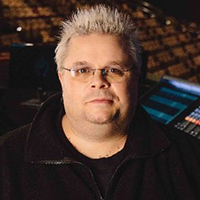Recently I was asked to speak to a group of audio engineers about what I do first when walking into a mix situation.
If memory serves, the host gave me this topic hoping to get a primer from me on building a glorious mix from the ground up, but instead the topic made me think about what’s literally in my head before ever touching a fader.
It’s so easy to immediately walk into a mix scenario without proper context. If you ever work around me, you’ll soon find that I’m a total context guy. Give me a few facts and a bit of background for whatever scenario we’re in and I can usually deduce a strategy to get us to the finish line. But throw me in cold and it’s no bueno. It’s no different when it comes to mixing.
Creating an audio mix can be summed up in several different ways.
I prefer to look at it like a funnel. I’m taking many different bits of info and throwing them in to this funnel. As these pieces swirl, combine, interact, and move closer to the bottom of the funnel, my task is to manipulate, adjust, extract, influence, and steer them to come out in the right order, facing the right direction, and congruent with one another.
Pretty simple right? Not hardly. But for me to make all this happen expediently and in an excellent manner, I’ve got to have some context…
What does the room sound like?
Elementary, eh? How many times do you listen to the space and get used to the way it actually sounds? What happens to the atmosphere when the air handlers are running? How does a spoken voice react in the room without people? How about some playback? Does audio energy excite certain frequencies? Are some dampened?
I rarely, if ever, touch a fader before listening to a space. It may be with a rocking playlist (click here for the MxU tuning playlist I’ve been using lately) comprised of songs I’m familiar with. It may be with a microphone. On occasion, I listen to plain old pink noise. Once you get used to it, pink noise can tell you a great deal about a space.
There was once a time when I would challenge myself to use only pink noise to EQ a room. No playback or mic of any kind until the band hit the stage. How about this: Stand in a quiet room and clap real loud and listen to the natural reverb decay. These ideas are all huge to give you some context of what’s going to happen when you start to introduce live inputs and energy into a space.
What temperature is the room going to be at service time?
This is a biggie and it’s most often overlooked. Audio is comprised of sound waves moving through air. The moisture content of that air will affect your audio greatly.
In most cases, doing a soundcheck in a space that is nice and cool with a relatively dry moisture content is probably not going to give you a great result come showtime after you start packing in people that are warm and well, moist (read: sweaty). Combined with the massive temperature and humidity changes that can come about from exterior doors being fanned while people are coming in, and you will most likely have a beast of a problem for the first few songs.
When you’re preparing to hit the faders, it pays to think ahead and get your space regulated to similar showtime conditions.














